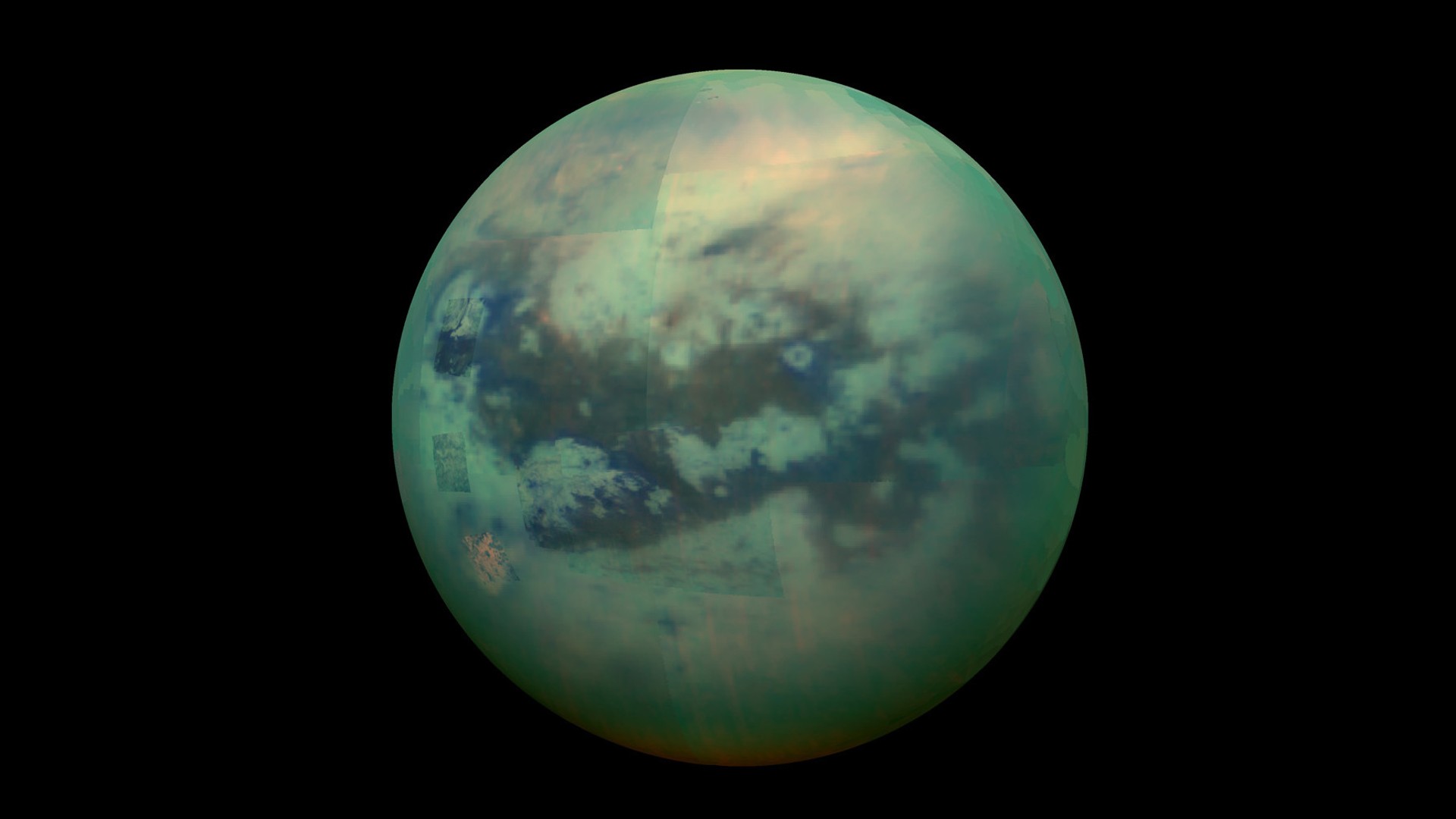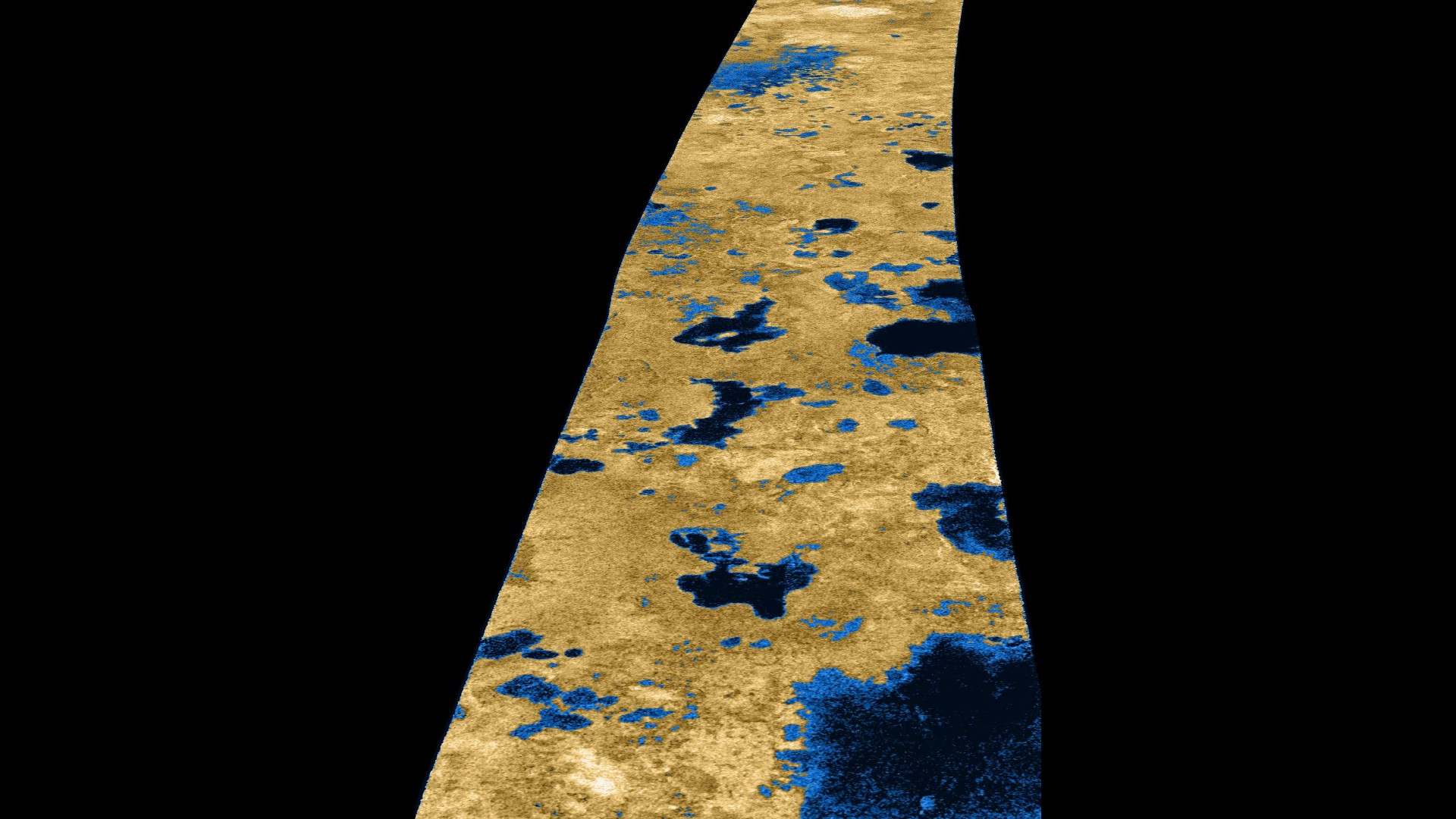
Nearly 20 years ago, the Cassini probe and its Huygens lander peeked under the hazy atmosphere of Saturn's largest moon Titan and gave us our first glimpse of the moon's familiarly strange surface.
Cassini-Huygens found that noxious liquids like methane and ethane form a very Earthlike patchwork of streams, rivers, and even seas as large as the Great Lakes.
Now, scientists poring over imagery from Cassini have determined that Titan may very well have another thing familiar to Earth's mariners: waves. Those scientists believe those waves may be responsible for eroding and reshaping Titan's lakeshores.
Related: Largest sea on Saturn's mysterious moon Titan could be more than 1,000 feet deep
First, the researchers simulated how shorelines would change under different conditions: Experiencing no erosion whatsoever; experiencing erosion from battering waves; and experiencing erosion from liquid slowly eating away at the lakeshore's material. Then, they corroborated their simulation results to what Cassini saw.
Titan's thick clouds occlude a visible-light view of the moon's surface, but Cassini came equipped with a radar instrument that allowed it to map Titan's mountains, canyons, and, indeed, shorelines. The researchers picked out Cassini traces of four particularly large Titanian lakes — the biggest of which, Kraken Mare, is similar in size to Earth's largest lake, the Caspian Sea.
The researchers then reran their simulations with the shapes of those four lakes to determine which of the three processes produced shorelines that looked the most similar to what Cassini saw. Wave-driven erosion came closest.

These results are the newest volley in an ongoing debate over whether Titan has waves or not. "Some people who tried to see evidence for waves didn't see any, and said, 'These seas are mirror-smooth,'" said Rose Palermo, a geologist at the U.S. Geological Survey and one of the researchers behind this study, in a statement. "Others said they did see some roughness on the liquid surface but weren't sure if waves caused it."
If it is true that Titan has waves, then it's likely that they are strewn up by Titanian winds. Palermo and co-authors now want to study the waves to learn more about those winds — how strong they are and where they're blowing.
The authors published their work in the journal Science Advances on June 19.







